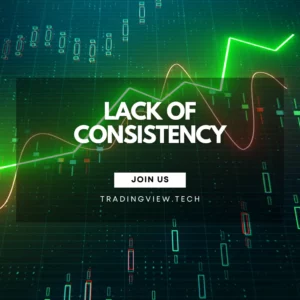Overconfidence in trading is a cognitive bias where a trader overestimates their knowledge, skills, or ability to predict market movements. It often stems from a distorted perception of past success and a false belief in one’s ability to consistently “beat the market.” This mental state can lead traders to take unjustified risks, ignore essential risk management protocols, or deviate from carefully designed strategies.
It’s important to differentiate between healthy confidence and overconfidence. Healthy confidence is rooted in experience, preparation, and discipline. It allows a trader to execute their strategy calmly, even in difficult market conditions. Overconfidence, on the other hand, leads to complacency and recklessness. A confident trader respects the uncertainty of markets and follows a plan; an overconfident trader feels invincible and often acts impulsively.
This bias is particularly dangerous in volatile or fast-moving markets. When price action becomes unpredictable and driven by news, sentiment, or macroeconomic events, overconfident traders may assume they can “read between the lines” or anticipate sudden swings. They might double down on losing trades, assume patterns where none exist, or ignore market signals that contradict their positions. All of this increases exposure to catastrophic losses.
Moreover, overconfidence dulls the psychological defenses that protect traders from emotional decision-making. It creates a false sense of control in a domain largely governed by uncertainty and probability. In essence, overconfidence blinds traders to the very risks they need to manage—making it one of the most destructive psychological traps in trading.
How Overconfidence Develops
Overconfidence doesn’t usually appear overnight. It builds gradually, often in subtle and psychologically reinforced ways. One of the most common pathways is a streak of winning trades, especially early in a trader’s career. These wins, while encouraging, can create a distorted feedback loop: the trader starts to believe their success is entirely due to skill, not realizing how much randomness and favorable market conditions may have contributed.
This illusion is reinforced by several cognitive biases. One of the most prominent is the self-attribution bias—the tendency to attribute successes to one’s own abilities and failures to external factors. For example, a profitable trade is seen as the result of smart analysis, while a loss is blamed on market manipulation, news events, or “bad luck.” This selective interpretation prevents traders from learning from their mistakes and encourages an inflated sense of competence.
Another key bias at play is the illusion of control. Traders under this illusion believe they can influence or predict market outcomes with greater accuracy than is realistically possible. They might believe their technical indicators have near-magical predictive power or that their “gut feeling” is more reliable than data. As this mindset deepens, traders may begin to ignore evidence that contradicts their expectations and become increasingly confident in flawed decisions.
Overconfidence can also be socially reinforced. In trading communities or social media, successful trades are often celebrated loudly, while losses go unmentioned. New traders might compare their wins to others’ wins, creating a false benchmark for success. This environment fuels the belief that constant profits are normal, pushing traders to overestimate their abilities to keep up.
Ultimately, overconfidence is born from a combination of psychological biases, selective memory, and a tendency to seek validation rather than objective feedback. The more it grows, the more it distances traders from the reality of risk—and the more likely it is to result in a painful correction.
Common Signs of Overconfidence
Overconfidence doesn’t always announce itself loudly—it often creeps into a trader’s behavior through subtle shifts in mindset and decision-making. Recognizing these red flags early is critical to avoiding self-sabotage. While the exact manifestations can vary, several behavioral and strategic patterns are typical of an overconfident trader.
1. Ignoring Risk Management Rules
Perhaps the clearest sign of overconfidence is a disregard for basic risk management principles. Traders may begin to neglect stop-loss orders, increase their position sizes beyond acceptable limits, or risk a disproportionate share of their capital on a single trade. This stems from a belief that they “know” the outcome of a trade and that the usual protective measures are unnecessary or overly cautious.
2. Increasing Trade Sizes After Successes
After a streak of winning trades, an overconfident trader might start compounding risk. They justify larger positions by their recent success, assuming their edge has grown stronger. This can quickly spiral into dangerous territory, as one bad trade can wipe out the profits of multiple winning ones—or worse, lead to severe account drawdown.
3. Deviating from the Trading Plan
A well-defined trading plan includes entry and exit criteria, position sizing, and risk-reward ratios. Overconfident traders, however, may start to see the plan as a suggestion rather than a discipline. They begin taking trades that don’t meet their criteria, enter earlier than planned, exit prematurely, or chase trades they would normally avoid. This deviation is based on gut feeling rather than logic or backtesting.
4. Believing “I Can’t Lose” or “I’ve Cracked the Market”
This mindset is a hallmark of overconfidence. A trader starts to believe they’ve mastered the market, that their analysis is always right, or that they have a superior intuition. This inflated sense of ability can create tunnel vision, where contradictory information is ignored and losses are rationalized away.
5. Trading More Frequently and Impulsively
Another warning sign is a sharp increase in trading frequency—especially if trades are being taken without thorough analysis. Overconfident traders often feel an urge to capitalize on “every” opportunity, leading to overtrading. This can exhaust mental capital and reduce overall performance due to emotional fatigue and impulsive decision-making.
6. Dismissing Feedback or Critical Review
An overconfident trader might stop reviewing their trades critically, brushing off feedback or even ignoring red flags in their own trading journal. They may skip post-trade analysis or look only for information that validates their choices. The result is stagnation in skill development and a blind spot to growing risks.
7. Emotional Detachment from Losses (or Hyper-Emotional Reactions)
Interestingly, overconfident traders may either brush off losses too quickly—“just a fluke, I’ll get it back”—or react with disproportionate frustration when reality doesn’t match their expectations. Both responses indicate a fragile ego rooted in an inflated view of one’s abilities.
By learning to identify these signs early, traders can self-correct before overconfidence leads to larger problems. Discipline, humility, and self-awareness are essential counterweights to the natural tendency to let success inflate the ego.
Consequences of Overconfidence
The fallout from overconfidence in trading is often swift and severe. What starts as a winning streak and a boost in self-belief can quickly unravel into a string of reckless decisions, leading to financial loss, emotional distress, and even complete account destruction. History—both personal and professional—is filled with cautionary tales.
1. Account Blowups After a Series of Wins
One of the most common patterns is a trader building up capital over several successful trades, only to lose everything—or more—on a single over-leveraged position. The confidence accumulated during the winning streak blinds the trader to risks they would have otherwise avoided. They bet bigger, trade more aggressively, and feel invincible. But when the market inevitably turns against them, they’re caught overexposed and unprepared. In a single session, weeks or months of gains can vanish.
2. Chasing Losses in Denial
Overconfident traders often struggle to accept losses. They may double down in an attempt to “prove” they were right, refusing to cut a losing trade. This denial mindset can create a snowball effect, where losses mount, and the emotional need to “get even” overtakes rational judgment. At this point, trading becomes a psychological battle rather than a strategic endeavor.
3. Psychological Burnout and Emotional Collapse
Even before financial ruin, overconfidence can lead to emotional exhaustion. The pressure of constantly proving oneself, the rollercoaster of inflated highs and crushing lows, and the refusal to rest or reflect—all of it compounds into burnout. Traders may feel anxious, irritable, or depressed. Some even quit trading altogether, disillusioned by what feels like a betrayal by the market—when in fact, the problem was their own unrealistic self-perception.
4. Real-World Case Studies and Famous Blowups
This pattern doesn’t just affect retail traders. Some of the biggest financial disasters in history have stemmed from overconfidence. Consider Nick Leeson, the rogue trader whose unauthorized speculative trades led to the collapse of Barings Bank in 1995. His early successes convinced him he could recover losses with even bolder trades—a textbook case of overconfidence turning into disaster. More recently, retail traders during the meme stock craze of 2021 saw large gains turn to losses due to aggressive, overconfident bets on highly volatile assets.
5. Reputational and Career Damage
For traders managing other people’s money or working professionally, overconfidence doesn’t just risk capital—it can destroy careers. A few poor decisions driven by ego or risk blindness can lead to lost clients, firings, or legal consequences, depending on the scale of the loss.
6. Missed Learning Opportunities
Perhaps one of the most overlooked consequences is the erosion of long-term growth. When traders believe they have little left to learn, they stop improving. Overconfidence halts the reflective process that fuels progress. Instead of refining skills, testing strategies, or adapting to changing markets, they stagnate or regress.
In short, overconfidence can turn a profitable trader into a gambler, a strategist into a risk-taker, and a learning process into a cautionary tale. It doesn’t just cost money—it costs progress, peace of mind, and sometimes, the chance to trade another day.
Strategies to Prevent Overconfidence
Preventing overconfidence in trading requires more than just awareness—it demands the consistent application of habits and systems that reinforce discipline, objectivity, and humility. Below are some practical strategies traders can implement to stay grounded and avoid the psychological traps that success can bring.
1. Stick Rigidly to Your Trading Plan
A well-defined trading plan is your first line of defense against emotional trading. This plan should include criteria for entering and exiting trades, risk/reward ratios, maximum position sizes, and rules for when to sit out. The key is to follow it consistently—especially during winning streaks, when the temptation to “improvise” grows strongest. Traders should treat their plan like a contract with themselves, not a suggestion that can be bent at will.
2. Keep a Detailed Trading Journal
Journaling is one of the most effective tools for staying objective. By recording every trade—including the setup, reasoning, emotions, and outcome—you create a record that separates fact from feeling. Reviewing this journal regularly helps spot patterns of overconfidence, such as unjustified trades or poor risk/reward choices. Importantly, journaling forces reflection, which slows impulsive behavior and sharpens self-awareness.
3. Use Stop-Losses Religiously
Stop-loss orders are essential, not just for limiting losses, but also for keeping ego in check. They impose discipline by forcing traders to accept when a trade has failed, no matter how confident they felt at the outset. Overconfident traders often avoid stop-losses because they believe they’ll “know” when to exit—but this leaves them vulnerable to denial and runaway losses. Automatic stops remove this danger by enforcing objectivity.
4. Review Wins and Losses Equally
Many traders analyze their losses closely but neglect to review their wins. This is a mistake. Wins can be just as misleading if they were the result of luck or poor discipline that happened to work out. By evaluating both successes and failures with the same critical eye, traders build a more accurate picture of their performance and reduce the chance of misattributing success to skill.
5. Set Performance Review Checkpoints
Schedule regular reviews of your trading performance—weekly, monthly, or quarterly. These reviews should focus on process metrics (Did I follow my plan?) rather than just profit and loss. Use them to recalibrate your strategy, refine your plan, and check in on your emotional state. A good checkpoint also serves as a reset mechanism after a streak (positive or negative), keeping you mentally grounded.
6. Limit Daily or Weekly Trade Volume
To curb overtrading driven by overconfidence, set caps on the number of trades you can take in a given period. This encourages selectivity and forces you to focus on quality setups rather than chasing every opportunity. It also helps you pause and reflect before making unnecessary moves.
7. Surround Yourself with Accountability
Whether through a trading mentor, community, or accountability partner, having someone to challenge your thinking and review your trades can keep you honest. Ego thrives in isolation—accountability helps deflate it with honest feedback and constructive criticism.
Building Sustainable Confidence Instead
While guarding against overconfidence is essential, the goal isn’t to eliminate confidence altogether. Instead, traders should aim to develop sustainable confidence—a steady, rational belief in one’s process that doesn’t waver with market fluctuations. Sustainable confidence comes from preparation, discipline, and the understanding that success is about probability, not certainty.
1. Learn Continuously
Markets are dynamic. No strategy works forever, and no trader knows everything. By treating trading as a craft rather than a game, and committing to ongoing education, you develop humility and resilience. Reading, studying market psychology, exploring new instruments, and learning from both mentors and mistakes all contribute to a deeper, more nuanced understanding of the markets.
2. Backtest and Forward-Test Your Strategies
Confidence built on data is stronger than confidence built on intuition. Backtesting allows traders to see how a strategy would have performed in various market conditions. Forward-testing (in a demo or small real account) provides real-time validation. These methods build belief in your system and reduce emotional swings that come from trading untested setups.
3. Embrace Humility as a Strength
Humility in trading doesn’t mean self-doubt—it means recognizing the limits of your knowledge and the unpredictability of the market. Humble traders admit when they’re wrong, cut their losses quickly, and never assume they’re smarter than the market. They know that survival is more important than being right.
4. Focus on Process, Not Outcomes
Shifting your mindset from “Did I win or lose?” to “Did I follow my system?” creates a more stable psychological foundation. Process-oriented thinking helps reduce the emotional highs of wins and the lows of losses. Confidence, in this model, comes from doing the right thing consistently—not from short-term results.
5. Build Emotional Discipline
Sustainable confidence isn’t just technical—it’s emotional. Meditation, journaling, physical activity, and proper rest can all contribute to emotional resilience. The ability to stay calm during a drawdown or patient during a slow market is often what separates seasoned traders from impulsive ones.
6. Celebrate Small Wins Thoughtfully
Acknowledge your progress, but avoid over-glorifying it. Whether it’s following your plan perfectly for a week or exiting a losing trade with discipline, celebrating these small, process-driven victories reinforces good habits. It’s these habits—not big wins—that form the foundation of lasting success.
In essence, sustainable confidence is built like a muscle—gradually, with repetition and care. It’s a quiet assurance rooted in preparation and perspective, not bravado. And unlike overconfidence, it doesn’t crack under pressure—it holds firm, even when the market doesn’t go your way.



